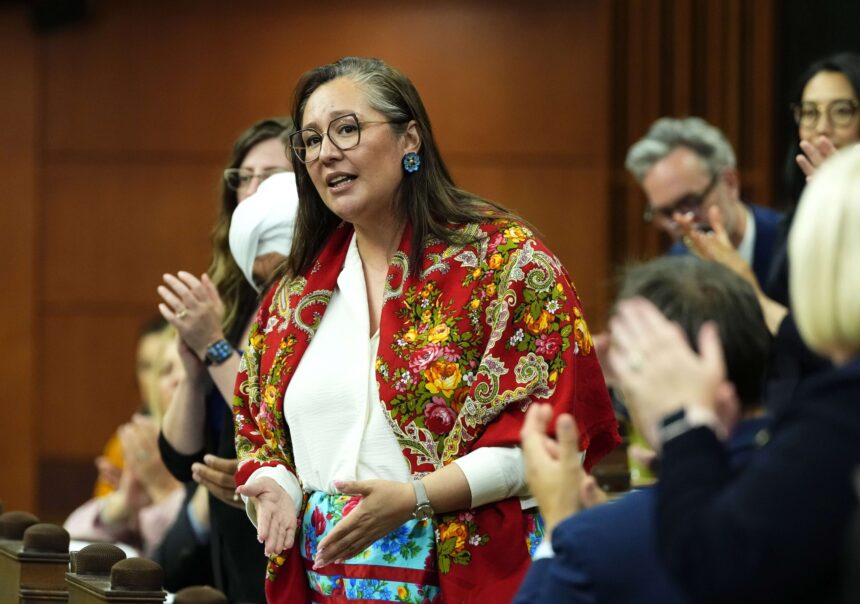In a move that’s been brewing for nearly three years, Indigenous Services Minister Patty Hajdu confirmed yesterday her intention to table the Safe Drinking Water for First Nations Act this fall, despite growing resistance from provincial premiers.
The legislation aims to address decades-long water advisories plaguing First Nations communities across Canada, but has become entangled in jurisdictional tensions with provinces claiming federal overreach.
“Clean drinking water isn’t a luxury—it’s a fundamental human right that too many First Nations have been denied for generations,” Hajdu told reporters outside the House of Commons. “While I respect provincial concerns, we cannot allow more delays on this critical matter.”
The announcement follows last month’s Council of the Federation meeting where seven premiers signed a joint statement expressing “deep reservations” about the federal framework. Ontario Premier Doug Ford called the proposed legislation “another example of Ottawa stepping into provincial jurisdiction without proper consultation.”
At the heart of the dispute lies the complex question of who holds authority over water systems that cross provincial boundaries yet serve sovereign First Nations territories. The new legislation would establish legally binding water quality standards specifically for First Nations communities and create an independent water authority with First Nations leadership.
For communities like Neskantaga First Nation in northern Ontario, which has endured Canada’s longest-running boil water advisory at 28 years, the political wrangling feels disconnected from daily realities.
“My community members still can’t drink from their taps after nearly three decades,” said Chief Wayne Moonias during a virtual press conference supporting the legislation. “While governments argue jurisdiction, our elders and children continue getting sick.”
According to Indigenous Services Canada data, 28 long-term drinking water advisories remain in effect across First Nations communities, down from 105 when the Liberals took office in 2015. However, critics note this improvement has come through infrastructure investments rather than systematic regulatory reform.
The Assembly of First Nations has cautiously endorsed the legislative framework, though National Chief RoseAnne Archibald emphasized that true sovereignty means First Nations themselves must have final approval on implementation.
“This can’t be another colonial approach to a problem created by colonialism,” Archibald said during parliamentary committee testimony last month. “First Nations must lead this process, not just be consulted about it.”
The proposed legislation follows a 2021 class-action settlement that saw the federal government commit $8 billion to water infrastructure and compensation for communities affected by long-term advisories. However, the settlement did not address the regulatory gap that experts say contributed to the crisis.
University of British Columbia water governance expert Dr. Emma Thompson points to the fundamental challenge: “First Nations communities operate in a regulatory void. Provincial clean water regulations don’t apply on reserves, but no equivalent federal standards exist either.”
This legislative gap persists despite a 2011 assessment commissioned by the federal government identifying it as a primary factor in water system failures.
Manitoba Premier Wab Kinew, the country’s only First Nations provincial leader, has broken ranks with fellow premiers, offering qualified support for the federal initiative.
“While I share concerns about jurisdictional clarity, Manitoba recognizes the unique circumstances facing First Nations and the need for immediate action,” Kinew stated in a separate response to the premiers’ coalition.
Political analysts note that the legislation represents a significant test for Hajdu, who took over the Indigenous Services portfolio last year after serving as health minister during the pandemic. Renowned for her collaborative approach, she faces the delicate task of advancing legislation that provinces view as intrusive while ensuring it remains meaningful to First Nations communities.
The bill’s specifics remain closely guarded, but government sources indicate it will include mandatory water quality standards, training requirements for system operators, and sustainable funding mechanisms—all developed through a co-management approach with First Nations.
Conservative Indigenous Services critic Jamie Schmale questioned both the timing and approach. “This government has had eight years to address this issue but chooses to rush legislation forward months before an expected election,” Schmale said. “First Nations deserve real solutions, not political theatre.”
The Assembly of Manitoba Chiefs released polling data suggesting 76 percent of Canadians support federal action on First Nations water quality regardless of jurisdictional concerns, indicating potential public backing for Hajdu’s approach.
For residents of affected communities, the technical and jurisdictional debates feel far removed from daily struggles. In Curve Lake First Nation, just two hours from Toronto, residents still receive weekly water deliveries despite years of infrastructure promises.
“I’ve been hearing about clean water legislation since I was a teenager,” said community member Jessica Coppaway, 37. “My children have never known what it’s like to safely drink from the tap. That’s not a political issue—that’s a human failure.”
As the legislative process moves forward, experts predict a challenging path. Constitutional lawyers anticipate potential court challenges from provinces, while water quality specialists warn that even with new regulations, addressing decades of infrastructure neglect will require sustained investment beyond current commitments.
Minister Hajdu maintains the legislation will proceed regardless. “We’ve consulted extensively and incorporated feedback from all stakeholders,” she said. “But at some point, action must take precedence over perfect consensus.”
With Parliament returning in September, the coming months will determine whether this long-promised legislation will finally bridge the clean water gap or become another chapter in Canada’s complicated path toward reconciliation.






